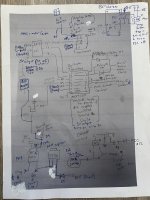I don't know anything about the system, just found that post with a quick google search on the term from your post "Go-Prammer".
But I expect it is like almost every other system, having just programmable parameters inside the controller itself, likely just with specific memory locations, and the handheld unit is a complete programming module with the ability to handle it's own display output and button input, process the user input from menus, and output that as a specific-format datastream via serial to the controller. ****
If the person in that post from four years ago still has their GP you could see if they will work with you on sniffing the data stream between the two during each type of programming change, on various controllers of different models (so you can locate the model-specific info and figure out it's format), so that you can then create your own device or program to do the job.
**** the only controller I am familiar with that does not do things this way is Lebowski's brainchip, which uses a terminal program on a PC/etc to receive serial data from the controller to make an on screen "menu" and then send your responses serially back to the controller, so there is literally no software required at all--even an ancient dumb terminal could talk to it.
But I expect it is like almost every other system, having just programmable parameters inside the controller itself, likely just with specific memory locations, and the handheld unit is a complete programming module with the ability to handle it's own display output and button input, process the user input from menus, and output that as a specific-format datastream via serial to the controller. ****
If the person in that post from four years ago still has their GP you could see if they will work with you on sniffing the data stream between the two during each type of programming change, on various controllers of different models (so you can locate the model-specific info and figure out it's format), so that you can then create your own device or program to do the job.
**** the only controller I am familiar with that does not do things this way is Lebowski's brainchip, which uses a terminal program on a PC/etc to receive serial data from the controller to make an on screen "menu" and then send your responses serially back to the controller, so there is literally no software required at all--even an ancient dumb terminal could talk to it.



